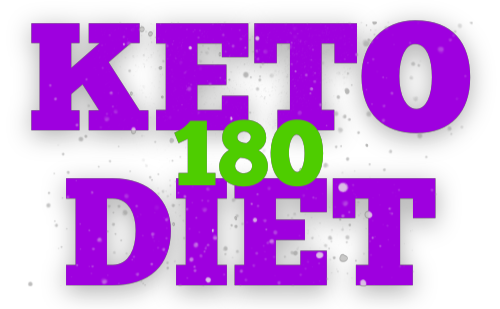Navigating the financial landscape to identify the most suitable loan can seem daunting, but understanding key factors can simplify the process. It’s vital to evaluate whether a loan fits into your budget, ensuring you can meet monthly obligations without financial strain. Knowing the distinctions among loan types aids in selecting an option that aligns with both your immediate needs and long-term financial health.
Interest rates play a crucial role in determining the cost of borrowing. Comparing personal loans and secured loans can reveal significant differences, with secured loans often offering lower rates due to collateral backing. Understanding these variations helps borrowers make informed decisions about the type of loan that minimizes total repayment amounts over time.
Evaluating loan installments involves assessing your financial capacity to handle monthly payments, thus ensuring you avoid overextending your budget. In this digital age, numerous simulators are available to assist in forecasting repayment scenarios. These tools offer valuable insights, allowing potential borrowers to test various repayment models and select an optimal loan structure tailored to their unique financial circumstances.
Examining Loan Fit for Your Budget
Determining if a loan fits your budget requires a clear picture of your monthly income and expenses. Start by listing all fixed and variable costs to understand your financial commitments. This analysis will help identify the discretionary income available each month, which can be allocated toward loan repayments without adding undue stress.
Ensuring that monthly loan installments don’t exceed your available discretionary income is crucial. Overspending can lead to financial strain and the risk of default. It’s wise to follow the 28/36 rule, which suggests that no more than 28% of your gross monthly income should go toward housing costs, and no more than 36% should cover total debts, including loans.
Evaluating loan terms and their impact on monthly payments also aids in determining affordability. Shorter loan terms typically mean higher installments but result in less interest over time, while longer terms may lower monthly payments but increase total interest paid. Balancing these aspects helps in aligning loans with financial realities.
Understanding Personal vs. Secured Loan Types
Personal loans are unsecured and often have higher interest rates. Lenders assess borrower risk-based purely on creditworthiness, leading to rates reflecting potential for default. These loans suit individuals needing quick access to funds without collateral but may result in higher overall costs.
Secured loans, backed by collateral like property or vehicles, offer more competitive interest rates. The reduced risk to lenders allows them to extend lower rates, beneficial for borrowers seeking cost-effective financing. However, the risk of losing the collateral in the event of default must be carefully weighed against the benefits.
Selecting between personal and secured loans hinges on your financial situation and risk tolerance. Consider your credit score, availability of collateral, and willingness to leverage assets. Evaluating these factors ensures a loan choice that aligns with both immediate liquidity needs and future financial stability.
Assessing Loan Installments
Fundamental to managing a loan is evaluating the impact of installments on your budget. Utilize a precise calculation of repayment capacity, factoring in all monthly expenses to gauge how additional debt affects your financial landscape. This assessment aids in preventing over-commitment to financial obligations.
Scrutinizing different loan duration options is critical. Short-term loans often have steeper monthly payments but can save you money in interest over time. Conversely, long-term loans reduce monthly burdens but increase interest paid. Understanding this balance allows you to make informed decisions that best fit your financial tolerance and objectives.
Comparative analysis of potential loans involves more than just reviewing interest rates. Look at the total cost of the loan over its lifespan, including any fees. Consider consultation with financial advisors or using online tools to simulate scenarios, ensuring a comprehensive understanding before commitment.
Utilizing Loan Simulators for Better Insights
Loan simulators offer a modern solution for evaluating financial commitments. These digital tools project future payments, assessing various scenarios based on interest rates, loan amounts, and terms. Their ability to provide a visual representation of payment schedules aids borrowers in making informed, data-driven decisions.
By adjusting simulation variables, borrowers can predict how different loans will impact their financial situation. This flexibility allows one to experiment with changing interest rates, loan sizes, and durations to see firsthand the effect on monthly cash flow and total repayment over time.
These technological resources are easily accessible and often free. They serve as a valuable supplement to professional advice, arming borrowers with preliminary insights before engaging with lenders. The empowerment gained from understanding potential financial obligations equips borrowers to navigate the borrowing process with confidence.
Choosing the Optimal Loan Structure
The optimal loan structure aligns with your financial goals and capabilities. Consider what you aim to achieve—whether it’s buying a home, financing education, or consolidating debt. Each goal demands a unique approach to loan structuring, emphasizing focused strategies on duration, repayment ability, and interest costs.
Adjusting amortization schedules can help align your financial goals with your current fiscal capabilities. If lower monthly payments are prioritized for cash flow flexibility, a longer-term loan may be considered. Conversely, if total interest cost reduction is paramount, a shorter term demands fewer resources over the loan life.
Conduct thorough research and seek expert advice for a well-rounded decision. Professional insights, combined with personal financial assessments, guide you to choose a loan that maintains fiscal health while meeting your financial aspirations. This approach ensures decisions are grounded in a comprehensive understanding of both personal finances and loan market dynamics.
Conclusion
Successfully navigating the landscape of borrowing requires a thorough understanding of one’s financial position and the myriad loan options available. By closely examining income, expenses, and financial goals, borrowers can select loan types and structures that align with their monetary health and future aspirations.
Leveraging loan simulators and professional advice enhances decision-making confidence, empowering borrowers to find optimal solutions without financial strain. Balancing interest rates, loan terms, and necessary collateral ensures that loans are both affordable and strategically beneficial, securing long-term financial well-being in a complex financial world.


